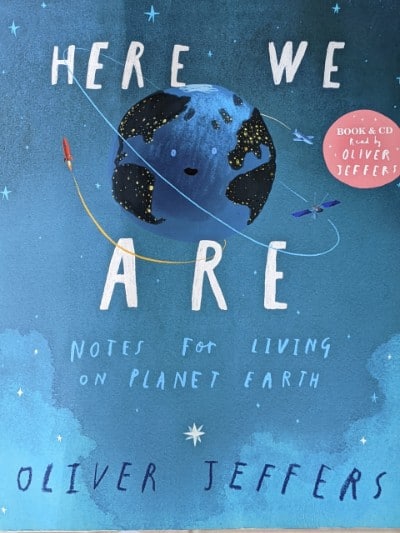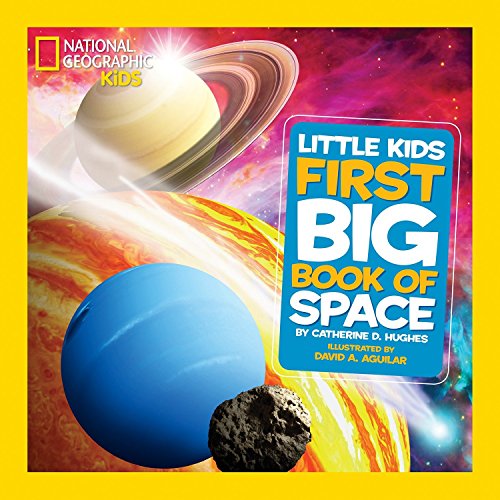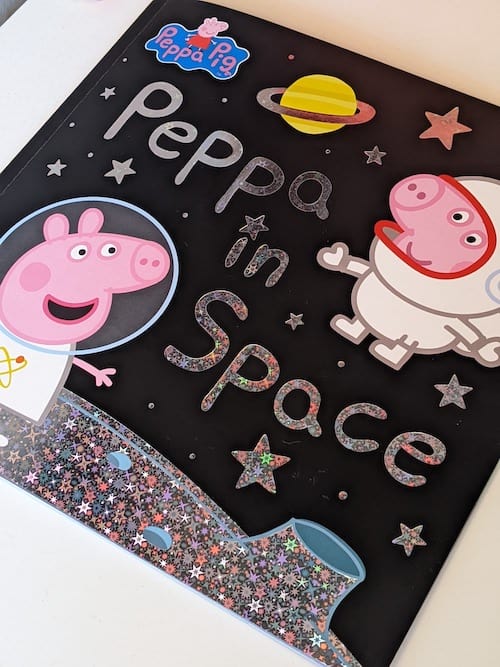We have broken down the best space and astronomy books into four sections to help you get straight to what you are looking for:
- Astronomy and Astrophysics Books – learn about space and the universe
- Stargazing and Telescope Books – how to view the night sky yourself
- Space Exploration Books – the history and future of human space missions
- Astronomy and Space Books for Kids – the best books on these topics for children of different ages
Best Astronomy and Astrophysics Books
Learn about space and the cosmos with these selected astronomy and astrophysics books.
All would be suitable for beginners but some are also right for any reader with even advanced knowledge.
Astrophysics for People in a Hurry
Neil de Grasse Tyson is one of the leading figures in modern astronomy and is able to take extremely complex concepts and explain them in a way that a regular person can understand.
This is an outstanding book to help you understand how the universe works – and to understand what we don’t understand!
This book updates a lot of the content from some of his earlier books and tries to explain the universe and how it works in a concise manner as possible.
- Author: Neil DeGrasse Tyson
- Year of release: 2017
Infinite Cosmos: Visions From the James Webb Space Telescope
This National Geographic book released in late-2024 showcases the best images that the James Webb Space Telescope has sent back so far.
This makes a brilliant and up-to-date coffee table book to browse through.
- Author: Ethan Siegel
- Year of release: 2024
To Infinity and Beyond: A Journey of Cosmic Discovery
In this book, Neil DeGrasse Tyson takes readers on an immersive journey through the cosmos, exploring the wonders and complexities of our universe.
The book is designed to be accessible to a wide audience, regardless of their scientific background, making it an excellent choice for anyone curious about the vast expanse of space.
Tyson’s narrative skillfully weaves together intricate details of astronomy with engaging storytelling, ensuring that complex concepts are both understandable and captivating.
He delves into topics ranging from black holes and quantum mechanics to the possibility of extraterrestrial life, all the while maintaining a tone that is both informative and inviting. This approach allows readers to grasp the grandeur and mysteries of the universe without feeling overwhelmed by technical jargon.
- Authors: Neil DeGrasse Tyson and Lindsey Nyx Walker
- Year of release: 2023
The Universe
Brand new in 2022, this book is based on the BBC TV series of the same name that was presented by Professor Brian Cox.
Filled with breathtaking images and illustrations, this book covers all that we know about what exists beyond our solar system – black holes, dying stars, potentially habitable planets, etc.
- Authors: Professor Brian Cox and Andrew Cohen
- Year of release: 2022
Cosmos
Cosmos is a classic that stands the test of time (and has been recently updated anyway). This book was the basis for the original Cosmos TV series that was remade in the past few years for Netflix with Neil de Grasse Tyson.
Much like the TV show, it covers space, time, and the universe, as well as bringing it together with the history of astronomy and the development of human knowledge and society. It’s fantastically written though and explains complex issues in a way a regular person can understand.
Carl Sagan was the author of many great books and a leading mind in 20th-century astronomical thought.
- Author: Carl Sagan
- Year of release: 1983
Astronomy For Dummies
Part of the famous and reliable “for dummies” series, this book provides a great overview of the basics of astronomy and the universe.
It briefly covers how to go about stargazing yourself (there are other books in the section below that specifically cover this) but has 300+ pages covering the solar system and galaxies, whether there is life out there, and astrophysics questions around the big bang and dark matter.
- Author: Stephen P. Maran
- Year of release: 2023
Space Atlas
This National Geographic book is a beautifully illustrated guide to the solar system and the universe beyond.
- Author: James Trefil
- Year of release: 2018
The Planets
This book – like The Universe above – is based on a BBC TV show but differs in that it focuses on the planets and objects that make up our solar system.
Each major planet has its own chapter that explains its formation, history, current climate and the details of NASA and space missions that have explored these bodies.
- Authors: Professor Brian Cox and Andrew Cohen
- Year of release: 2019
A Brief History of Time
Hawking’s Brief History of Time is another must-read-before-you-die classic.
Originally released in 1988, this edition was updated with 240 added illustrations in 1996.
Less about space and more about the nature of the universe and the rules that govern our existence. It’s a complete overview and explanation of all we know and can theorize about these topics.
- Author: Stephen Hawking
- Year of release: 1988 (this edition 1996)
Earth and Space
This book showcases the best photography from the archives of NASA and all the missions to the planets of our solar system and beyond.
If you want more photography-based books, see our guide to the Best Astrophotography Books.
- Authors: Nirmala Nataraj
- Year of release: 2015
Best Stargazing and Telescope Books
The books below focus on three main areas to help the budding stargazer:
- What equipment is needed
- What you can expect to see with amateur equipment
- How to find objects in space that you now wish to view
All of these books are suited for both beginner and experienced astronomers, but they may differ in being pocket-sized guides to take out when viewing the sky, or more weighty and comprehensive tomes, as well as those that provide practical advice for 2023, and those that give more timeless guidance.
Turn Left at Orion
Turn Left at Orion is one of the most popular astronomy books of all time. Now in its fifth edition, it has been bought by over 150,000 people since its initial release in 1989.
The book gives a detailed overview of how to use a telescope, it covers viewing the major objects of the solar system, and then has information on what can be seen during the different seasons and months of the year.
It also features comprehensive tables of hundreds of objects in the sky and how you can locate them. Various online supporting materials to accompany the book are available for free here.
A keen astronomer who already has a telescope will get the most out of this book. It focuses on helping you target and find specific objects in the sky and is an invaluable practical resource to go with you when stargazing.
- Author: Guy Consolmagno & Dan M. Davis
- Year of release: 2019
2025 Guide to the Night Sky
Updated annually, this is the 2025 North American version of this book. It gives a month-by-month guide to what can be seen across the year and includes charts and tables to present the necessary data clearly. The book is small and light and designed to be taken out on stargazing sessions.
If you are not in North America, then other regional versions of this book are available.
As with Turn Left at Orion above, this would suit both more experienced astronomers and beginners that are keen to be getting the most from their equipment in 2025.
- Author: Storm Dunlop & Wil Tirion
- Year of release: 2024
The Backyard Astronomer’s Guide
The Backyard Astronomer’s Guide is regarded as one of the best astronomy books available. This is the fourth edition released in 2021 and updates the previous iteration from 2008.
It’s hefty and comprehensive (for instance, it contains over 500 color photographs) and takes you through the basics of what equipment you need and how to use it, to how to target and see specific objects in space.
It includes a 20-page atlas of the Milky Way, and there is a chapter on photographing objects in space with your telescope.
- Author: Terence Dickinson and Alan Dyer
- Year of release: 2021
Stargazing: Beginners Guide to Astronomy
This book is published by the Royal Observatory Greenwich in the United Kingdom (the home of Greenwich Mean Time) but is written for budding astronomers all over the world, and includes seasonal star charts for use in both the Northern and Southern Hemispheres.
It is a beginner’s guide to the basics which touches on a lot of topics without getting too technical. It includes the basics of astronomy and the cosmos, as well as how to get into stargazing – what you can expect to see, what equipment you need, and also touches on astrophotography.
If you are after a good overview of all you need to know about astronomy for beginners, then this book might be for you. It doesn’t provide detailed step-by-step guides that, for instance, you would take with you when you want to go out and observe the sky with a telescope, but rather is more a guide that you would read at home at your leisure to get a better understanding of the basics.
The authors are Radmila Topalovic, Astronomy Programs Officer, and Tom Kerss, Lead Astronomy Education Officer at the Royal Observatory.
- Authors: Radmila Topalovic and Tom Kerss
- Year of release: 2017
Backyard Guide to the Night Sky
Another easy-to-read guide to stargazing for beginners. This one comes with the National Geographic seal of approval.
This is a practical guide for grown-ups to get out and understand the night sky above them. The bonus is that it is pocket-sized, and so can be carried around easily.
- Author: Andrew Fazekas
- Year of release: 2019
Best Space Exploration Books
The best books all about the history and future of space travel and exploration.
The Right Stuff
This is the classic account of the USA’s space race with the USSR from the point of view of an embedded journalist (Tom Wolfe) and the astronauts and their families.
Regarded by many as one of the greatest books of all time, it centers on one of NASA’s first manned missions and gives a fascinating insight into the individuals involved.
- Author: Tom Wolfe
- Year of release: 2008
The Six: The Untold Story of America’s First Women in Space
“Six: The Untold Story of America’s First Space Disaster” by Loren Grush offers an in-depth exploration of a lesser-known yet pivotal event in space history. The book delves into the tragic tale of Gemini 6, a mission that encountered a near-catastrophic failure moments after launch.
Grush’s narrative skillfully reconstructs the events leading up to and following the incident, providing a gripping account of the challenges faced by astronauts and the ground crew.
Thorough research and attention to detail shine through in this work, bringing to life the intense atmosphere of the 1960s space race. She offers a vivid portrayal of the astronauts’ experiences, the technical complexities of the mission, and the high stakes involved.
- Author: Loren Grush
- Year of release: 2023
Hidden Figures
You may have seen the movie and this is the amazing true story of three black female mathematicians at NASA who played a pivotal role in some of the most important space missions, all during the time of segregation.
This is a great snapshot of history, but also a brilliant insight into NASA’s and the US’s history and an endorsement of the value of diversity.
- Author: Margot Lee Shetterly
- Year of release: 2016
A City on Mars
“The City on Mars: How We’ll Settle the Red Planet (and Why We Must)” is a comprehensive and thought-provoking book delving into the ambitious goal of colonizing Mars.
It presents a detailed vision of how human settlement on Mars could become a reality. The book is a blend of scientific rigor and practical insights, examining the challenges and potential solutions involved in establishing a human presence on the Red Planet.
The authors’ approach is multidisciplinary, combining elements of engineering, biology, and sociology to paint a realistic picture of Martian colonization. They explores various aspects such as habitat design, life support systems, and the psychological impact of living on Mars.
This is an essential read for anyone interested in the future of space exploration and the feasibility of life beyond Earth. It offers a well-researched and engaging look at one of humanity’s most daring aspirations.
- Authors: Kelly Weinersmith and Zach Weinersmith
- Year of release: 2023
Rocket Men
Rocket Men is the little-known story of the NASA Apollo 8 mission to take humans to the moon in 1968, which was the first attempt to send men from Earth to another destination (before the later successful moon landing in 1969 with Neil Armstrong and Buzz Aldrin).
It reads like a novel (narrative non-fiction) and tells a story that is not well known as it was overshadowed by later events. Released in 2018, it makes a great gift for a space enthusiast with a love for reading.
- Author: Robert Kurson
- Year of release: 2018
Chasing New Horizons: Inside the Epic First Mission to Pluto
Another great new book for space-lovers, Chasing New Horizons is the story of the NASA mission which sent back those amazing pictures of Pluto (and its “heart”) that we are now so familiar with.
The story goes back decades and looks at the people, the engineering feats, and everything that went wrong. The author, Dr. Alan Stern, was one of the main protagonists in the mission and so is able to tell the real inside story.
- Authors: Alan Stern & David Grinspoon
- Year of release: 2018
The Future of Geography
“The Future of Geography: How Power and Politics in Space Will Change Our World,” authored by Tim Marshall, delves into the evolving dynamics of geopolitical power as humanity extends its reach into space.
Marshall, known for his expertise in geopolitics, explores how the exploration and potential colonization of space will impact global politics on Earth. The book offers a unique perspective, intertwining the realms of space exploration with international relations and strategic power plays among nations.
Marshall’s analysis extends beyond the technological aspects of space travel, focusing instead on the political and economic implications. He examines how the race for space resources and territorial claims might shape future global alliances and conflicts.
This work stands out for its insightful approach to the topic, providing readers with a deeper understanding of how space exploration could redefine geopolitical boundaries and power structures on Earth and beyond.
- Author: Tim Marshall
- Year of release: 2023
When the Heavens Went on Sale: The Misfits and Geniuses Racing to Put Space Within Reach
“When the Heavens Went on Sale: The Misfits and Geniuses Racing to Put Space Within Reach” by Ashlee Vance offers a captivating narrative on the new era of space exploration.
Vance, known for her engaging writing style, chronicles the stories of various individuals and companies that are pioneering the commercialization of space travel. The book stands out for its deep dive into the lives and ambitions of these modern space visionaries, revealing the human side of a field often dominated by technical jargon.
Vance’s work is notable for its focus on the entrepreneurial and innovative aspects of space exploration, highlighting how space is becoming more accessible than ever before.
She explores the technical challenges, financial hurdles, and regulatory landscapes these trailblazers navigate. This book is a must-read for anyone fascinated by the intersection of business, innovation, and the final frontier. It provides a unique look at the contemporary space race, one fuelled not just by nations, but by dreamers and mavericks reshaping our approach to the cosmos.
- Author: Ashlee Vance
- Year of release: 2023
The Space Barons
Modern space exploration is increasingly moving beyond NASA and the other national space agencies and into the private sphere – with companies like Space X. This book delves into this development and examines those leading the charge, namely Elon Musk and Amazon’s Jeff Bezos.
It’s a fascinating story that is developing fast and helps you understand the impact these people are having and what we can expect to see in the coming years and decades with planned manned missions to Mars and the emergence of space tourism.
The author is a Washingon Post writer covering the space industry.
- Author: Christian Davenport
- Year of release: 2019
Carrying the Fire
This is the autobiographical account of the astronaut Michael Collins who piloted the Apollo 11 mission in 1969 that landed Neil Armstrong and Buzz Aldrin on the moon
Regarded as possibly the best astronaut biography of all time, it gives a fascinating account of the astronaut program and being one of the first humans to travel into space.
- Author: Michael Collins
- Year of release: 2019 (this edition)
Reentry: SpaceX, Elon Musk, and the Reusable Rockets that Launched a Second Space Age
This is the account of how Elon Musk’s Space X went from an ambitious start-up to a serious player in the world of aerospace and space exploration.
It’s a rollercoaster account from a journalist who has covered the company from its beginnings and benefits from access to Musk and other important figures.
- Author: Eric Berger
- Year of release: 2024
Escaping Gravity
This is the account of NASA’s former Deputy Administrator, Lori Carver, who lead a transition team appointed to modernize the agency from a bloated and inefficient body to reclaim its purpose today.
This is a behind-the-scenes look at how hard it is to turn around a giant organization and how this succeeded.
- Author: Lori Garver
- Year of release: 2022
Bringing Columbia Home
The account of the Columbia space shuttle disaster, the tragic loss of its crew, and the efforts to recover what remained of the ship.
Another great insight into NASA and its missions, centered around one of the worst disasters in space flight history.
- Author: Michael D. Leinbach and Jonathan H. Ward
- Year of release: 2018
Best Astronomy Books for Kids
These books are a mixture of fun picture books for younger kids, some more educational children’s books for learning about space in general, and some more practical guides to stargazing for children.
Here We Are
I personally have this for my young kids and love reading it to them. The illustrations are amazingly detailed and kids can look at them endlessly and uncover new things.
It introduces the basics of our planet and where it exists in space. Don’t expect anything too detailed, but rather an inspirational picture book for children.
- Author: Oliver Jeffers
- Year of release: 2017
- Age range: 3-7 years
The Astronomy Book
This book is like a fun textbook to learn about the solar system and beyond. It profiles all the planets as well as covers things like dark matter, the big bang, and the history of astronomy.
- Author: Dan Green
- Year of release: 2021
- Age range: 9+ years
There’s No Place Like Space
This Dr. Seuss-style illustrated book from the Cat in the Hat Learning Library is extremely popular and a great gift for children to help them learn about the planets and solar system.
Originally released in 1999, but revised in 2009 to bring it up-to-date (i.e. to remove Pluto as a planet). It’s best for reading to younger children (lots of colorful pictures and low on text). The author has written over 160 kids’ books.
- Author: Tish Rabe and Aristides Ruiz
- Year of release: 2009
- Age range: 3-6 years
Little Kids First Big Book of Space
This is an extremely popular astronomy book for kids. It provides an educational overview of the Solar System and what things like constellations and meteorites are.
It’s for an age range where children will be able to read and explore the book themselves – not a bedtime story type book like There’s No Place Like Space above.
- Author: Catherine D. Hughes and David A. Aguilar (Illustrator)
- Year of release: 2012
- Age range: 3-6 years
Mousetronaut
Mousetronaut is a story picture book for kids that is written by a real astronaut, Mark Kelly, and based on his experiences of going to space with real mice aboard the space shuttle Endeavour in 2001.
It’s suitable for reading with younger children.
- Authors: Mark Kelly and C. F. Payne
- Year of release: 2012
- Age range: 2-6 years
Look Inside Space
This board book is full of lift-up flaps for kids to investigate with their fingers and reveal what’s hidden.
It’s a really interesting book that works for younger kids who love the images and older kids can they can read it and learn more.
- Authors: Rob Lloyd Jones
- Year of release: 2023
- Age range: 5-7 years
Ultimate Explorer Field Guide: Night Sky
Another National Geographic book for kids, but this one is a more practical guide to astronomy and viewing the night sky, as opposed to the Little Kids First Big Book of Space, which is for a younger age range and provides more general background information about space.
This book is perfect if you have a home telescope that you want to use with your child to help successfully find objects in space from your garden or on trips.
- Author: Howard Schneider
- Year of release: 2016
- Age range: 6-9 years
Astrophysics For Babies
Astrophysics for Babies sounds pretty crazy, but these Baby University board books explain scientific concepts in a simple and fun way with great illustrations.
- Author: Chris Ferrie and Julia Kregenow
- Year of release: 2019
- Age range: 1-3 years
Peppa in Space
Just like in the TV show, this is the fun story of Peppa Pig, George, and their classmates going to a space museum to learn about the solar system and manned missions to the Moon and Mars.
It’s good harmless fun for a Peppa fan whilst perhaps giving some STEM inspiration to encourage interest in space exploration.
- Author: Peppa Pig
- Year of release: 2019
- Age range: 2-4 years
50 Things To See With A Telescope for Kids
Whilst the cover looks pretty uninspiring, this is actually the perfect book to go alongside a telescope for a child.
It’s a practical guide to what you will be able to see through a telescope and how to locate and view specific objects.
Included are photographs of what the planets etc. will look like when seen through a small telescope, and so provide a dose of realism and help you understand if you are looking at the right thing.
- Author: John A Read
- Year of release: 2017
- Age range: 5-9 years
What Are The Best Space and Astronomy Books?
In the above books, we have looked to recommend the best available for learning how to look at the stars, for learning about space and the universe, and for children to learn about both of these things.
If you have any favorite recommendations not covered above then please let others know in the comments below.
If you are searching for presents for a space-lover, then also check out our guide to the Best Gifts for Stargazers.









































